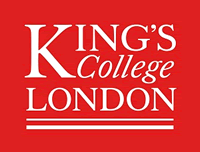Applications are invited for the fully funded studentship starting on 1st June 2023. The studentship is part of the CDT in Surgical & Interventional Engineering.
The Centre for Doctoral Training in Surgical & Interventional Engineering is an innovative three-and-a-half-year programme. We bring together a world-class multidisciplinary team to deliver translational research and transform patient pathways. The Centre trains and nurtures the next generation of surgical and interventional engineering scientists, researchers, innovators and industry leaders to address key challenges faced in the UK and globally by surgeons, interventional specialists and associated teams.
The programme benefits from a unique environment of a world-leading, research-focused university with facilities embedded within a top-rated teaching hospital, St Thomas’ Hospital. We have strong links with key medtech industry partners nurturing the clinical translation of the research.
Aim of the project
Endovascular treatment of atherosclerotic arterial disease affecting the lower limb arteries has become the first-line treatment in patients with symptomatic peripheral arterial disease. This commonly involves stenting the treated arterial segment where the stent acts as a scaffold to maintain vessel patency. Biomimetic stents (Supera) have shown satisfactory patency rates and freedom from re-interventions in the femoro-popliteal segment (superficial femoral artery and proximal popliteal artery). However, endovascular treatment of certain arterial territories – namely the common femoral artery (CFA) and distal popliteal artery (Pop A) – remains controversial because both arterial segments are located across an active joint (e.g., the hip and knee). There are unproven theories that joint movements will produce compression and deformity of the stents with consequent stent damage and occlusion. The aim of this project is to examine whether joint movements have an impact on the arterial flow dynamics distal to the joint.
Project description
Pulsatile blood flow will be simulated in the larger arteries of the systemic circulation by solving the one-dimensional (1-D) equations of blood flow in compliant vessels, using our in-house code Nektar1D (http://haemod.uk/nektar). The model will be used to study the flow dynamics distal to the joint under the effect of the net flow reductions and pressure drops across the joint obtained experimentally in the PhD project Blood flow dynamics assessment within the Supera stent in the common femoral and popliteal arteries which will run in parallel with the current project. The following tasks will be carried out to fulfil the project’s objective:
Task 1 – Normal physiology blood flow model: Our existing model of pulsatile blood flow in the systemic circulation – which includes the 116 larger arterial segments that perfuse the head, thorax, abdomen, upper and lower limbs (Am J Physiol, 2019) – will be expanded to include relevant arterial segments branching off the iliac and femoral arteries, such as the CFA and Pop A. The arterial segments of the major collateral pathways of the lower limbs will also be included. Pressure, flow velocity, and luminal area pulse waves will be simulated at common measurement sites and compared qualitatively with corresponding typical waveform shapes in healthy adults, for different age groups. A more in-depth quantitative comparison will be carried out for the flow velocity waveforms simulated in the lower limbs, where corresponding in vivo waveforms are available for this project.
Task 2 – Diseased blood flow model: Several levels of peripheral artery disease (PAD) will be simulated in the normal physiology model. This will be achieved by changing the geometrical and material properties of the arterial segments of the lower limbs, following a similar approach to the one we developed to simulate abdominal aortic aneurysms of different sizes (Symmetry, 2021). Simulated pulse waves will also be tested by qualitative comparison with corresponding waveform shapes in patients with PAD, using quantitative comparisons for the flow velocity waveforms simulated in the lower limbs.
Task 3 – Joint movements: The effects on lower-limb blood flows of the flow reductions produced by joint movements in the femoral and popliteal arteries will be simulated. This will be achieved using the experimental data produced in the parallel project, which will provide pressure drop measurements across the joint. This data will be prescribed to both arteries in the normal physiology and diseased blood flow models developed and tested in Tasks 1 and 2, respectively. We have previously used pressure drops to simulate partial occlusions of arteries in the cerebral (J. Biomech., 2007) and upper-limb (Am J Physiol, 2020) circulations. Different anatomical variations of the collateral pathways will be considered to study the role of collateral pathways in the blood supply to several downstream vasculatures of the leg. This part of the project will build on our previous study of blood flow in the cerebral circulation, where the most frequent anatomical variations of the circle of Willis where considered (J. Biomech., 2007).
Informal email enquiries from interested students to the supervisor are encouraged (contact details below).
Dr Jordi Alastruey-Arimon- [Email Address Removed]
Please visit CDT in Surgical & Interventional Engineering website for more information on eligibility criteria and application instructions.
If you have any questions about the application process please email [Email Address Removed]

 Continue with Facebook
Continue with Facebook



